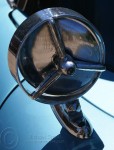Archives for General Photography category
Everybody loves a list. This list is my homage to examiner.com which recently published a top 10 photography web site list. I liked the idea and decided to come up with my own version. So here are 10 photography related websites that I frequent and have found useful and/or entertaining.
1. Digital Photography School (DPS)
DPS has been a never ending source of how-tos and tips and tricks on photography for me. They offer a steady stream of information in three main categories – photography, cameras and equipment and post production. No matter what you need to know related to your photography you are likely to find it here. How to best photograph lightning; which is the best memory card; how to do some basic clean up in Photoshop – you name it. There are also some very well done user interaction options including polls, forums, a photo gallery and even the possibility to submit your own writings. The Digital Photography School’s website is a must have in your bookmarks.
2. photo.net
If you visit this site for nothing more than inspiration your every creative need is sure to be fulfilled. Photo.net is best described as a community of photographers. The user photo galleries are good, very good, and I can let time get away from me when perusing them. But, if you allow yourself to dig a little deeper, there are also some excellent forums, equipment reviews, industry news and tutorials. Yep, you need to bookmark this one too. (Warning: You will end up with 10 new bookmarks by the end of this post.)
3. Flickr
This is one you may have heard of before. It has its share of critics and nay-sayers as does anything of any size. But when it comes down to it, Flickr is just a great and easy way to share your photography. There are groups to join and discussions to chime in on, “friends” to be made and lots of great photographs (and some not so great) to discover. Be forewarned however, once you start posting your photographs you might find it a bit addicting a la Facebook. But what is one more online addiction? Go ahead and sign up, then bookmark.
4. Outdoor Photographer
Wait a minute; that is a magazine you say? Really it is a matter of, “but wait, there’s more…” As with any savvy publication in the 21st century Outdoor Photographer has a web site, and a very good web site at that, to compliment, if not enhance, their printed publication. Two things I love most about the Outdoor Photographer site (is this a list within a list?) are the professional galleries and the contests – who doesn’t love a contest? On top of that they have all the other bells and whistles – forums, reviews, tutorials, well written articles. Yes, you guessed it, add this one to your bookmarks as well. At this point you might want to create a folder so these don’t get lost in a mass of other bookmarks.
5. DSLRTips.com
Digital is the future and the here and now. So a whole site dedicated to nothing but the Digital SLR has got to be an awesome site. And it is. This is the place you want to go if you are shopping for accessories for your DSLR. They have reviews and buying guides for everything from the tripod to the lens. But the Brits who run this site kick it up a notch by offering a whole lot of workshops in video form. Anything from mastering night photography to blurring the background can be found in easy to follow video tutorials. No more of that boring reading – well hopefully you will still read now and again, at least until I turn shuttermike.com into a video blog.
Come back tomorrow for Part II and the remaing 5 top photography sites I recommend.
Note: I have no personal affiliation with any of these sites. So everything written here are my thoughts and opinions gathered through using the sites. Of course should any of them like to hire me to write a little something, I probably won’t object.
Wired Magazine recently published an article (editorial) titled 10 Photography Pet Peeves We’d Throw Down a Black Hole. Although the article is probably written from the angry professional photographer with superiority complex angle to get a reaction and stir up conversation, it seems to me the author did not take a few things into consideration.
- Trite Flickr Comments: Yes, there are many less than insightful comments on all the photo sharing websites. But who are the majority of the users of these sites? Professional photographers seeking critiques of their latest work? Or average point-and-shoot and cell phone camera users having fun with friends and family? If you want deep insights stick to photo.net, “A community of photographers” or something similar and not a photo sharing site for the average joe.
 Watermarks: With the rise in popularity of sharing photos on the Internet on everything from Facebook to Photobucket “borrowing” photos and even claiming them as your own has become common practice. Not to mention outright taking them without compensation to the artist for other commercial use. For the amateur photographer who works hard at mastering photography their work is a sense of pride. I do not have delusions that my work is worth millions or even hundreds, but I want people to know it is mine and I worked hard to create it.
Watermarks: With the rise in popularity of sharing photos on the Internet on everything from Facebook to Photobucket “borrowing” photos and even claiming them as your own has become common practice. Not to mention outright taking them without compensation to the artist for other commercial use. For the amateur photographer who works hard at mastering photography their work is a sense of pride. I do not have delusions that my work is worth millions or even hundreds, but I want people to know it is mine and I worked hard to create it.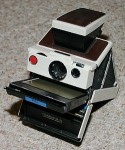 Rock Concert Strobage and Arm’s Length Self-Portrait: Ok, I can’t say I disagree with these two. But come on, in the grand scheme of things digital photography is a relatively new technology and it has brought photography to the masses. It is silly to be so critical of people enjoying photography for their personal use. No one is claiming the arm’s length self-portrait as a masterpiece of art. I’m sure there are quite a few Polaroid self-portraits from the early 60’s floating around out there.
Rock Concert Strobage and Arm’s Length Self-Portrait: Ok, I can’t say I disagree with these two. But come on, in the grand scheme of things digital photography is a relatively new technology and it has brought photography to the masses. It is silly to be so critical of people enjoying photography for their personal use. No one is claiming the arm’s length self-portrait as a masterpiece of art. I’m sure there are quite a few Polaroid self-portraits from the early 60’s floating around out there.
Note: The dollar sign image is from Stock Xchng and the Polaroid camera image is from Wikipedia. Neither are original Mike Small photographs.
Online photo sharing has mushroomed in popularity since the digital camera and cell phone cameras have become common place. There are photo sharing sites that are widely known and used by millions of amateur and professional photographers alike. Flickr, Shutterfly, Snapfish and Photobucket stand out by the shear volume of users. But there are others that may not be at the multi-million user level, yet are worth exploring a little further.
 Winkflash has a lot to offer. Although the main focus of the site is to sell prints and other photo related merchandise, which is generally the case with the free sites, they offer members a good array of free services. In fact “free” is what distinguishes Winkflash from competitors. There are no options to get more services by purchasing a premium membership, everyone gets it all for free.
Winkflash has a lot to offer. Although the main focus of the site is to sell prints and other photo related merchandise, which is generally the case with the free sites, they offer members a good array of free services. In fact “free” is what distinguishes Winkflash from competitors. There are no options to get more services by purchasing a premium membership, everyone gets it all for free.
- Image hosting with various levels of sharing permissions
- Unlimited free storage
- Online photo editing software included
- Free high resolution downloads
 Webshots combines the social media aspects of sites like Flickr with the ecommerce options of sites like Snapfish. Users can browse and comment on the photos uploaded by others, upload their own photos and purchase everything from 4 x 6 prints to mugs and mouse pads with your images on them. Unlike Winkflash, Webshots has different levels of membership with the free option having some limitations.
Webshots combines the social media aspects of sites like Flickr with the ecommerce options of sites like Snapfish. Users can browse and comment on the photos uploaded by others, upload their own photos and purchase everything from 4 x 6 prints to mugs and mouse pads with your images on them. Unlike Winkflash, Webshots has different levels of membership with the free option having some limitations.
- Free and premium memberships
- Free downloadable photo management application
- Store up to 1000 images for free (more with the paid option)
- Create albums, share them and even embed them on your website or blog
 Focus U is one of the few free sites that does not offer all the photo printing options as well. You will not find coffee mugs and t-shirts or cute photo albums for purchase on this site. As a result the free membership is somewhat limited and they do offer two paid account options, Pro and Advanced. But the free option still offers a nice package of features.
Focus U is one of the few free sites that does not offer all the photo printing options as well. You will not find coffee mugs and t-shirts or cute photo albums for purchase on this site. As a result the free membership is somewhat limited and they do offer two paid account options, Pro and Advanced. But the free option still offers a nice package of features.
- Photo storage – but only 6 mb (about 60 photos) – paid accounts get up to 120 mb
- Image rating by yourself and other members
- Photo editing tools
- Album creation and sharing – public and private options
- Lifetime storage of your photos
 Fotki is touted as an online community of photo fans. But it is so much more; it offers a photo sharing option a la Flickr, the ability to order prints, and something most others do no include, the option to sell copies of your prints. To top it off they are one of the few sites to offer users FTP access and reporting options. Most of these features do require upgrading to a premium account, but for as little as $2 a month, it is well worth it.
Fotki is touted as an online community of photo fans. But it is so much more; it offers a photo sharing option a la Flickr, the ability to order prints, and something most others do no include, the option to sell copies of your prints. To top it off they are one of the few sites to offer users FTP access and reporting options. Most of these features do require upgrading to a premium account, but for as little as $2 a month, it is well worth it.
- Unlimited storage space with a premium account – limited to 100 MB with free account
- An online community for sharing and commenting on photos
- Personalized site to display your photos
- Tree-type folder structure for organizing
 Like Focus U, Zooomr is strictly a photo sharing site and does not have the option to buy prints from the site. What sets it apart from others is its social networking features such as tagging, comments, RSS feeds and geotagging. The site is a bit cumbersome and lacks some standard website components such as FAQs and intuitive navigation.
Like Focus U, Zooomr is strictly a photo sharing site and does not have the option to buy prints from the site. What sets it apart from others is its social networking features such as tagging, comments, RSS feeds and geotagging. The site is a bit cumbersome and lacks some standard website components such as FAQs and intuitive navigation.
- Unlimited uploads
- Options to personalize your page
- Integration of social networking features
There has been a lot of buzz lately about “Photographer’s Rights,” i.e. what am I allowed to shoot and who, if anyone, has a right to stop me or confiscate my equipment or photos? If you are a photographer, especially since 9/11, with anything more than a point-and-shoot camera you could potentially find yourself in a situation where your right to photograph something is questioned.
 Not too long ago I was in downtown Phoenix and was stopped twice in one day. Once by a security guard and once by a Maricopa County Sheriff. The security guard had undoubtedly seen me on a security camera as I was photographing the exterior of the Bank of America building on a Sunday. She was very polite when she approached me and simply asked what I was doing and told me “They don’t like you taking pictures of the buildings.” I did not argue the point at the time but thought it was strange since it was a public plaza (Collier) and a skyscraper in downtown Phoenix that had certainly been photographed before. A simple search on Google results in its own Wikipedia page and a street view of the building on Google maps.
Not too long ago I was in downtown Phoenix and was stopped twice in one day. Once by a security guard and once by a Maricopa County Sheriff. The security guard had undoubtedly seen me on a security camera as I was photographing the exterior of the Bank of America building on a Sunday. She was very polite when she approached me and simply asked what I was doing and told me “They don’t like you taking pictures of the buildings.” I did not argue the point at the time but thought it was strange since it was a public plaza (Collier) and a skyscraper in downtown Phoenix that had certainly been photographed before. A simple search on Google results in its own Wikipedia page and a street view of the building on Google maps.
 For the second incident later that day I was photographing some public art outside the Maricopa County Courthouse when a sheriff officer pulled over. Again, he was very polite (and a little bothered because they made him stop on his way to lunch). He asked what I was doing, if it was for business or personal use and to see my identification. Again, I was not taking pictures of anything secret or not meant for public view. In fact, the new court house tower has a live web cam watching the construction process.
For the second incident later that day I was photographing some public art outside the Maricopa County Courthouse when a sheriff officer pulled over. Again, he was very polite (and a little bothered because they made him stop on his way to lunch). He asked what I was doing, if it was for business or personal use and to see my identification. Again, I was not taking pictures of anything secret or not meant for public view. In fact, the new court house tower has a live web cam watching the construction process.
My encounters with the “law” were minor, but they have certainly made me cautious and think twice about what I am photographing. So I did some research to get the facts straight.
There are two very good sources available that explain your rights as a photographer and what you can and cannot do. Print, read and carry one or both of these in your camera bag.
The Photographer’s Rights by Bert P. Krages (Attorney)
Legal Rights of Photographer’s by Andrew Kantor
Here is a brief recap of your rights as a photographer in the US.
- In general, if you can see it, you can photograph it.
- Public places are fair game to photograph.
- You are free to photograph private property as long as you are standing on public property.
- You can photograph people, including children, without their permission as long as they are in a public place and do not have a reasonable expectation of privacy.
- Private property used as public property such as malls, churches, and office lobbies are acceptable to photograph.
- Public infrastructure (except where expressly prohibited by law) such as bridges, airports, public utilities and transportation are all fair game. There are some exceptions when it comes to military bases adn nuclear power facilities.
- Police and security guards cannot require you to delete your photos or confiscate your equipment (if you are being arrested there are exceptions). This requires a court order.
- The Patriot Act, Homeland Security rulings and anything related to “9/11” do not prohibit photography.
- These rules apply to taking photographs, publishing and selling them after the fact gets a little more complicated. But this is covered in the two documents above.
I got a chance to use the sports action exposure mode on my camera while I was in San Diego a few weeks ago. The pier at Mission Beach is a great spot to watch the surfers. There was a competition going on so it seemed like a good opportunity to see what the sports action mode was capable of producing.
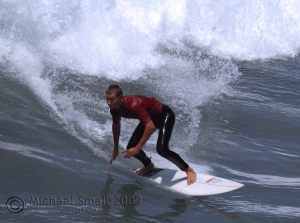
This particular shoot was very spur-of-the-moment, but had I planned it out or next time there are a few things I would keep in mind.
- Vantage point is key when photographing something that is moving quickly. The view of the surfers from the pier was pretty good due to the “from above” position, but I got a lot of their backsides. Moving around to find the best spot is important.
- It would be helpful to do a little research on the sport you are shooting before hand. Knowing something about surfing would help in predicting when a good photo opportunity might be about to happen.
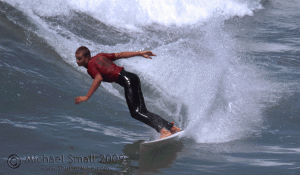
I realize I am late to the party – and far beyond fashionably late. But I have recently discovered Twitter. Well, I of course knew it existed; I just never really understood it and could not imagine how it might be useful to me. FaceBook has provided me with all the play by play updates of my Internet circle that I needed.
But I can now say “I was wrong,” and the usefulness of Twitter is becoming more and more clear to me. Although I am pretty certain that I have not even scratched the surface as to all it potentially has to offer. But I can see it looming…
My recent venture into Twitterdom got me to thinking about how Twitter and other bits of the Internet can help me improve my photography and get a better understanding of the fundamentals and techniques of photography.
So here are my Twitter and General Internet Tips for improving your photography skills (I am sure these can be expanded, to some degree, to any hobby or obsession):
It is all about the Who!
With Twitter, who you are following and subsequently who is following you is critical. It is easy to get carried away and start following people willy-nilly. I have gotten off track already, but the majority of those I follow are related to photography or design.
Read, Read, Read
I didn’t make this connection at the beginning, but what better way to expand my photography knowledge than to surround myself with others that do what I do. It can get addicting and a bit daunting to try to keep up with all the twitted information. But in just a few days I have already found so many resources and sites and bits of information on the web that I would not have stumbled upon on my own just by reading the tweets of people involved in what I am interested in, photography.
Use Your Tweeps
Don’t just read what everyone else is posting. Contribute. Post your photos and ask for feedback (or don’t ask, but someone is bound to offer it anyway). Ask questions, inquire. Most of these people are twittering because they have something to say (although some have way too much to say and some a lot of nothing to say) and enjoy saying it. Try posting your latest shot with TwitPic and see what advice or critiques people offer.
Beyond Twitter
Forums are a great way to connect to other people that share your interests. No matter what you are into there is certainly a forum out there focusing on it. I came across my first forum through Twitter. I just started using it but so far I got some suggestions for a new tripod and have a photography assignment I’m going to try.
Flickr is another great way to share your work with your fellow photographers. There are more groups than you could ever explore. Find a few that are common to your interests and share some photos. See what people say and what advice they offer. Be sure to offer the same advice to others that post.
Outdoor Photographer Magazine is having a “World Wonders” photo contest. There is a grand prize of $1500 or a DSLR camera and a people’s choice award which is based on votes from viewers.
I have submitted one photo so a little self promotion is in order. Vote for mine!
 This post is by no means a “how to” on photographing fireworks. For that, do what I did and read “How to Photograph Fireworks Displays” from the Digital Photography School. They are a great resource with a lot of good advice and tips.
This post is by no means a “how to” on photographing fireworks. For that, do what I did and read “How to Photograph Fireworks Displays” from the Digital Photography School. They are a great resource with a lot of good advice and tips.
 I attempted photographing fireworks for the first time last night, the Fourth of July. I was happy with a few of my shots, but that is a few out of 135. Here are some of the tricks I picked up from DPS’s post and trial and error while out shooting last night.
I attempted photographing fireworks for the first time last night, the Fourth of July. I was happy with a few of my shots, but that is a few out of 135. Here are some of the tricks I picked up from DPS’s post and trial and error while out shooting last night.
Location, location, location. Scout out a good location to set up early. If you are too far away you are not going to get good photographs unless you have a really good telephoto lens . Also keep in mind you are going to need someplace to set up your tripod.

Timing is everything. I do not have this mastered yet, but it takes some practice to know just when to hit the shutter button. Too early and all you get is the trail of the rocket going up (like this one). Too late and you get a nice shot of smoke. I found that after watching a few rockets you can anticipate what the half way point is between being launched and exploding. That seemed to be the best time to hit the button.
Experiment. Photography is all about trying different things to get the shot you want. This was especially the case with photographing fireworks. Here are some of the things I tried (some worked and others didn’t):
- Shutter speed – I started out at 5 seconds and tried various speeds down to 2 seconds. I think somewhere between 2.5 and 5 worked best for me.
 Aiming the lens – It is very hard to know exactly where to aim into the dark to get the shot you want. I found aiming in the direction of the fireworks display and then tilting the camera on the tripod slightly up and down to keep the show in frame worked fairly well. Sometimes I missed.
Aiming the lens – It is very hard to know exactly where to aim into the dark to get the shot you want. I found aiming in the direction of the fireworks display and then tilting the camera on the tripod slightly up and down to keep the show in frame worked fairly well. Sometimes I missed.- Focus – How do you focus on something that is there for only seconds and you can’t touch the camera? Not easy to do, but I used the manual focus (keep auto focus off for this) and focused on something in the direction of the show and then left it alone.
- Aperture – I read that an aperture range of f/8 to f/16 works best for fireworks photography. So I trusted the experts and did not experiment with this setting leaving it at f/8.
Equipment. There are a few essentials that will make photographing fireworks much easier. First, a tripod. It is critical to fireworks photography to keep the camera steady. No matter how unnerved you are or how steady handed, no one can keep the camera absolutely still at the longer shutter speeds. Second is a shutter release cable or remote. This is a great tool when taking pictures with long shutter times. It allows you to keep your hands off the camera completely eliminating any movement. A self timer could also work, but you need to be very good at your timing since you need to set it to go off right before the explosion which is hard to anticipate.
Keep Shooting. The great thing about digital photography is that it costs the same to shoot 10 photographs as it does 100. So in the case of something like a fast action fireworks display just keep shooting. You can sort through the photos later to eliminate the ones that did not work and Photoshop as necessary.



Montezuma Castle is one of the best preserved Native American cliff dwellings in the US. Located near Camp Verde, AZ it was built by the Sinagua Indians over 800 years ago. The “castle” was named by the Spanish after the Aztec ruler Montezuma as they believed he was connected to its construction.
This National Park has some great photography opportunities both of the castle itself and the surrounding Beaver Creek area. A few miles further North is Montezuma Well, a natural limestone sinkhole. It is worth the extra 11 mile drive and the short hike down to the well.
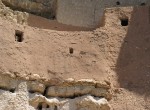

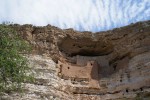

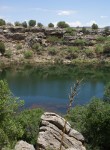
Click on the images to enlarge.
Modern Phoenix put on the Founding Fathers of Modern Phoenix home tour today. The tour featured homes in the Arcadia and Uptown Phoenix areas by mid-century modern designers such as Ralph Haver, Al Beadle, Calvin Straub, Ned Sawyer, Harold Ekman and Donn Wooldridge.
In addition to the homes on the tour, a local classic car club had cars on display at most of the homes.


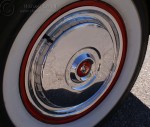
Click on the images for a larger version.

